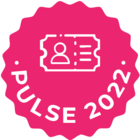Introduction
Responding to customer risks in a reactive manner often leads to delayed solutions and dissatisfied customers. By automating workflows that are triggered by key digital signals—such as declining product usage or low engagement—you can take proactive steps to re-engage customers and address potential risks early. This article will guide you through automating workflows using Gainsight’s tools, allowing your team to focus on building stronger customer relationships while automations handle operational complexity.
Step 1: Automate Risk Alerts and CTAs
Set up automated workflows that trigger CTAs when digital signals indicate a potential risk:
-
Trigger CTAs Based on Product Usage: Use Rules Engine to automatically generate CTAs when product usage drops below a predefined threshold. For example, trigger an alert if a customer isn’t using a core feature for a specific period.
-
Prioritize CTAs by Severity: Assign priority levels to CTAs based on the severity of the risk. A higher priority might be given to accounts nearing renewal, ensuring your team focuses on accounts that need the most attention.
By automating risk alerts, you ensure that your team can engage customers before issues escalate.
Step 2: Automate Customer Journeys for Re-Engagement
Once risk alerts are triggered, automate customer journeys to re-engage customers and address issues early:
-
Proactive Engagement Journeys: Use Journey Orchestrator to automate personalized engagement workflows. For example, when a customer’s product usage drops, automatically send an email offering additional training or resources.
-
Segment-Based Journeys: Customize engagement workflows based on customer segments (e.g., Enterprise vs. SMB) or lifecycle stage. For onboarding customers, trigger automated journeys focused on feature adoption, while for expansion customers, focus on ROI and deeper product usage.
Automating journeys helps ensure consistent engagement across your customer base, reducing the manual effort for your team.
Step 3: Track Workflow Performance and Make Adjustments
Regularly monitor the effectiveness of your automated workflows and adjust them to improve performance:
-
Monitor Journey Performance: Use Dashboards to track the success of your automated journeys, such as open rates for engagement emails or increases in feature adoption.
-
Refine Workflow Triggers: Adjust the triggers and content for your automated workflows based on customer feedback and performance data. For example, if certain workflows are not re-engaging customers effectively, refine the messaging or adjust the timing of the engagement.
By continuously monitoring and refining workflows, you ensure that your automated processes remain effective and relevant.
Step 4: Automate Follow-Up Actions with Playbooks
Ensure that your team has clear follow-up actions after automated workflows are triggered by using Playbooks:
-
Deploy Playbooks for High-Risk Accounts: Automatically trigger Gainsight Playbooks when CTAs are generated. These playbooks guide CSMs through specific actions, such as scheduling a check-in call or offering a personalized demo.
-
Create Playbooks for Different Risk Types: Customize playbooks based on the specific risk being addressed. For example, a playbook for low adoption could focus on product training, while a playbook for support-related issues might involve escalating the case to the product team.
Automating follow-up actions ensures that risks are handled consistently and effectively, reducing churn and improving customer satisfaction.
Next Steps for Success
With automated workflows in place:
-
Monitor journey performance: Regularly track the effectiveness of your automated customer journeys using dashboards and refine them based on performance data.
-
Automate Playbooks for follow-up: Ensure that Playbooks are automatically triggered for high-priority risks, guiding your team through the next steps.
Explore More:
